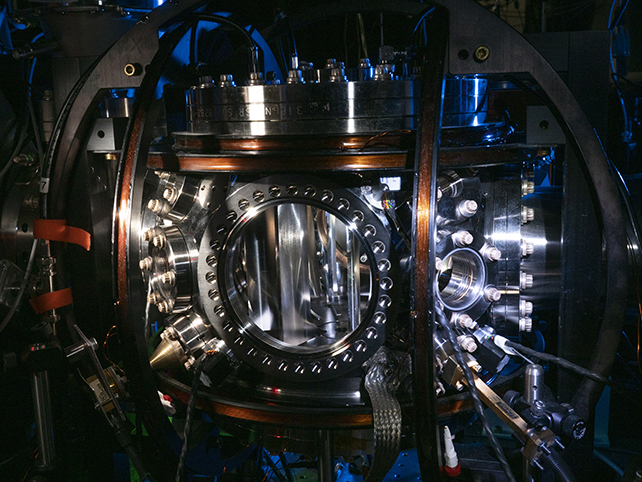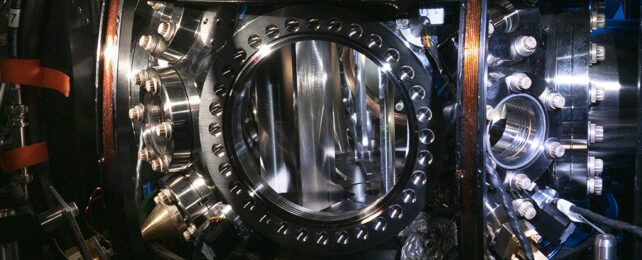University of Colorado scientists have set the tightest constraints yet on the potential size of separation in electrical charges within an electron, or its electric dipole moment (EDM).
While it doesn't mean we know what that size is or if it even truly exists, it could help weed out ideas explaining why the Universe isn't just an empty space.
That mystery concerns the balance of matter and antimatter in the Universe – particles with very similar properties but that are mirror images in specific ways, including their charge state. The problem is this: The Standard Model of particle physics predicts equal amounts of both matter and antimatter around us, which doesn't seem to be the case.
Not only that, but matter and antimatter particles annihilate each other, so it's a wonder we ever got past the Big Bang. It, therefore, follows that the Standard Model is partially incomplete and that there are other particles and particle interactions out there that we haven't yet discovered.

This brings us back to the electron's permanent EDM. This measurement can aid in the discovery of missing matter because it indicates a breaking of symmetry – that maybe matter and antimatter aren't perfectly opposed enough to completely cancel each other out.
"The imbalance of matter and antimatter in our Universe provides compelling motivation to search for undiscovered particles that violate charge-parity symmetry," write the researchers in their published paper.
"We present the most precise measurement yet of the EDM using electrons confined inside molecular ions, subjected to a huge intramolecular electric field, and evolving coherently for up to 3 seconds."
This incredibly complex experimental setup included magnetic fields, lasers, microwaves, and radiofrequency fields to carefully control and measure electrons. Ultimately, the upper bound of the EDM was set some 2.4 times higher than before and around 1 billion times bigger than that predicted by the Standard Model.
Essentially, an EDM shows a separation of charge – that an electron's charge isn't a single, perfectly centered point but slightly stretched. In that extra space, we might find the answers as to why we've ended up with more matter than antimatter and why these opposing particles haven't canceled each other out.
In technical terms, this represents a time symmetry violation (TSV). Usually in physics, pressing rewind on a process simply looks like a reversal of the activity running forward in time. They should look the same in all respects, making time symmetrical.
A violation occurs when some aspect now looks different in reverse. While there are known examples of time symmetry violations, none are significant enough to account for the predominance of one kind of matter over another.
An electron's EDM would be a signature of time symmetry violation and, if large enough, might account for the mismatch in matter and its 'reversed' twin.
The mystery is by no means solved yet, but we're getting closer to an explanation by hunting down the tiniest of asymmetries that could have been key – and knowing the electron's permanent EDM to a precise level is going to be crucial in that.
The research has been published in Science.
